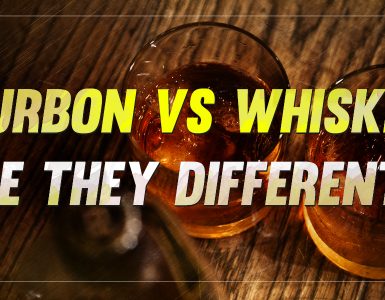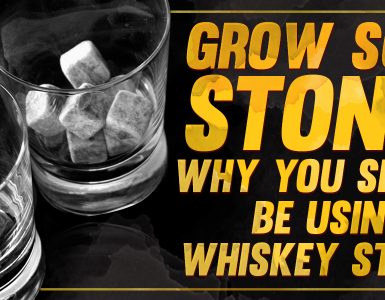Beyond the highlands: Whiskey brands to look out for
Whiskey has long been a popular drink all over the world, and was often associated with a certain degree of snobbishness, especially in its country of origin which is, of course, Scotland. Many a kilted old highlander would squint a grizzled eye at the Yank asking the proprietor for some ice to drop in his single malt highball at a Glasgow pub. However, these Scotch whiskey purists now constitute only a miniscule slice of the global whiskey community. The Scots have, for many years, ceased to be the top consumers of whiskey on both a per capita basis and in absolute figures. Surprisingly, the people who are most inclined to drink whiskey today are the French, and the country that consumes the most whiskey, in fact about half of total world consumption, is India. Surprise. Surprise.
Strictly speaking, though, the overwhelming majority of what India’s whiskey drinkers enjoy isn’t exactly whiskey as defined by the international industry. What they call whiskey could be any of the various popular domestically concocted alcoholic beverages produced by blending the distillate of fermented molasses with actual whiskey. India does manufacture some true whiskey made from domestically grown barley, rye, and other grains, but also imports a considerable amount of whiskey from Scotland. India also imports an increasingly large amount pf whiskey from the most important player to watch in the global whiskey industry today, the United States.
Of course, the U.S. is a relatively new giant in the world of whiskey, and cannot produce what would be rightfully and legally referred to as Scotch. The good news is that the North American whiskey manufacturers never needed to imitate or emulate Scotch whiskey, as they came to develop whiskey types of their own, and succeeded in conquering every part of the world with American whiskey.
Purists and posh traditions
A great deal of the know-how and recipes that enabled America to develop high quality whiskeys and formulate its own standards came from the Old World, as secrets were shared by distillers from Scotland, Ireland, and other European countries. The dispersal of the once-esoteric craft of whiskey making was not limited to the U.S. since a number of successful distilleries also sprung up in Canada and remarkably, in Japan. Some of the products from this new frontier of whiskey inevitably rivaled or surpassed the quality and popularity of the notable brands that originally inspired them. Soon, the word “whiskey” ceased to be synonymous to “Scotch” as major whiskey types like Kentucky Bourbon, Canadian whiskey, and even the remarkably smooth Suntory whiskeys from Japan gave the Scots a run for their money.
The more prominent of these new distilleries evolved their own exacting traditions and standards in the production of their whiskeys. Most whiskey drinkers are acquainted if not enamored with the American market leader, Jack Daniels with its Tennessee straight bourbon whiskey, and other major American distilleries like Jim Beam and Evan Williams with its black label whiskey. The iconic Wild Turkey Whiskey is a Kentucky Straight bourbon that is available in a 110 proof variant, which means the drink has an alcohol content of a soaring 55 percent. A brand that is highly rated internationally is Bulleit Whiskey, a high rye content Kentucky Straight Bourbon. These whiskeys are produced in an old heirloom recipe in the family of company founder Thomas Bulleit.
Outside the U.S., a number of distilleries produced whiskey according to the evolving standards of their respective countries. Canadian whiskey became extremely popular both in that country and across its U.S. border. The signature and master series of the blended Canadian Whiskeys of Crown Royal were developed as a gift for the British royal family before the Second World War. Another popular Canadian whiskey is the Quebec-distilled Black Velvet Whiskey. However, the most popular Canadian whiskey in the U.S. is Canadian Club, which has recently been acquired by the Illinois-based Beam Suntory company which, in turn, is a subsidiary of Suntory Holdings in Osaka, Japan.
The success of the Suntory distilleries has proven that Japanese whiskey has come of age, whether the self-professed Scotch connoisseurs like it or not. Whiskey fanciers who once gave Japanese products the snub were horrified and humbled when Yamazaki Single Malt Sherry Cask 2013 whiskey took the crown as the best whiskey in the world in 2014. The Yamazaki Single Malt 12, 18 and 25 year old whiskies are produced by the first Japanese whiskey distillery that was established in 1923 by Suntory. The Suntory company also distributes its multi-awarded Hibiki whiskey for people who prefer blended whiskeys over single malts.
Never to be outdone, the drink-loving Irish have a generous share of the international market, even if some of their Irish whiskeys are presently manufactured in the U.S. The biggest brand is Jameson Whiskey which is notably the best selling Irish whiskey in the world. This whiskey is a blend of grain whiskey, single malt whiskey, and single pot still whiskey using barley sourced in the vicinity of Cork. The oldest of all Irish whiskeys available on the market is Bushmills Black Bush Irish Whiskey which is made from a unique combination of malt whiskey with a sweet batch-distilled grain whiskey to impart rich and fruity notes.
Craft and signature distilleries
Owing to the growing popularity of whiskey, especially in the U.S., a number of enterprises developed craft or artisan whiskeys which are usually produced in small batches. Tin Cup Whiskey is an American brand that is basically a blend of blend of bourbon-style whiskies to produce a stronger and spicier drink. The brand gets its name from the large cap on the bottle that also serves as a cup. An even fancier bottle is used by Virginia Black Whiskey, a two to four year old bourbon that aims to emulate the performance style of the company owner, the popular rapper, songwriter, and actor, Drake.
The rye whiskies and bourbons of Redemption Rye Whiskey are hand-crafted in a 168-year-old distillery in Indiana. It suggests a throwback character to the early days of America before the prohibition during which time the popular whiskeys had bolder and spicier notes that made excellent cocktails. In contrast, the easy-to drink Makers Mark Whiskey is bourbon distilled to the lowest alcohol content of any American whiskey, thereby allowing a rich, fruity flavor without the burning sensation of strong drink. It is also among the more affordable brands. The sprawling tourist-friendly complex of Buffalo Trace Distillery does more than sell the company’s whiskey. It allows guests to savor the experience of producing the Kentucky straight bourbons that made the company famous.
Challenging the conventional whiskey producing methods, the manufacturers of Cleveland Whiskey use a “disruptive technology” which shortens the usual maturation time required for flavors to develop in the whiskey. This near-heretical production outfit produces unusual bourbons in its Clevelend Underground Select line which have finishes with the aromas of Hickory, Sugar Maple, Black Cherry, and other woods. Other small producers are the handcrafted Woodinville Whiskey which instills influences of both Kentucky and Washington, and Blanton’s Whiskey, the original single-barrel bourbon which has been awarded the Gold Medal at the annual International Wine and Spirits Competition for five years.
Whiskey is often also used for advocacy or patriotic purposes, as in the case of the Leadslinger’s Whiskeys which are produced by seven U.S. Armed Forces veterans who had been in combat and wished to offer a whiskey product for fellow combatants and other Americans who exercise their right to bear arms. Without exaggeration, these products truly have an image of an American assault rifle on their labels. On its part, Pendleton Whiskey, which is a blended Canadian whiskey, was made to honor the American cowboy, and sought to come out with a whiskey that approximated the sort of drink that Old West cowboys ordered at saloons. A very recent entry into the whiskey industry is Utah’s High West Whiskey which is produced by the first legally licensed distillery in Utah since the end of American prohibition.
Flavors, spices, and fun
Traditional whiskeys derived their flavors and bouquets from the wood of the barrel the distillate is aged in, the grain from which the mash was made, and sometimes, from the peat used in drying the malt. The American industry has long since pulled the stops on these conventions, and done what might be regarded as sacrilegious to the Old World purists. What they probably regard as even worse than adding ice or cola to one’s whiskey is bottling whiskey with added flavors mixed in. But these products are highly appreciated. Bird Dog Whiskey offers bourbons flavored with essences of apples, blackberries, chocolate, strawberry, jalapeno honey, and others. Old Camp Whiskey claims to offer a little bit of Florida and a little bit of Georgia with its Peach Pecan flavor.
Coldcock Whiskey refers to its American bourbons as herbal blended whiskies as they are instilled with flavors like green tea, eucalyptus, ginger, hibiscus, end others. They also claim to have less sugar than other flavored whiskeys. American honey whiskey literally adds pure American honey to Wild Turkey Kentucky Straight Bourbon Whiskey to produce a smooth, easy to manage drink. Fireball Whiskey of Canadian club origin is infused with cinnamon, and is made much easier to drink by limiting the alcohol content to only 33 percent.
The love for whiskey has inspired the founding of dining establishments and hotels, as well as a lot of paraphernalia associated with whiskey drinking. Florida’s Whiskey Creek Wood Fire Grill derives its name from the stream that meandered so much that it seemed to progress as a drunken man would make, “staggering across the land” when trying to walk home. The Atlanta restaurant named Whisky Blue is a fashionable high-end night spot that offers signature whiskey cocktails.
The very innovate Whiskey Wedge is a silicon ice molding device that is placed over a water-filled glass that is left in the freezer overnight to make ice form in a wedge-shaped barrier. This results in a similarly wedge-shaped piece of ice in the glass to help keep your whiskey cold without unduly diluting it from the melting ice.
Surely, whiskey is the one drink that has won the admiration of people all over the world. With the growing number of whiskey brands, and the newfound liberalism characterizing whiskey drinking today, more people are coming to enjoy this wonderful beverage.
















